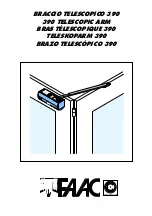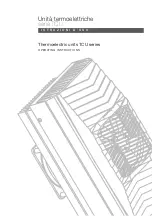
GDO-12 HIRO Installation Manual
15
CAUTION:
Activate the operator only when
the door is in full view, free of obstructions
and with the operator properly adjusted. No one
should enter or leave the garage while the door is in
motion. Do not allow children to play near the door.
Fig.7.1.1
7.1 How to Use Your Opener
For maximum efficiency of your operator, your garage door
must be in good operating condition.
An annual service of your garage door by door professional
is recommended.
REPLACE WITH BATTERY CR2032
Fig.7.1.2
7.1.1 To Operate the opener:
a. Press the programmed transmitter button until your door
begins to move (usually 2 seconds). Make sure you can
see the door when you use the transmitter
(Fig 7.1.1)
.
b. If you are in a vehicle you should aim the transmitter
through your windscreen as shown.
c. Check that the door is fully open or closed before you
drive in or away.
d. If you press the transmitter whilst the door is moving the
door will stop. The next press of the transmitter will move
the door in the opposite direction.
7.1.2 Replacing the Battery: 3V Lithium Battery
CR2032.
a.
To test the battery is working, press and hold a transmitter
button. Check Light Status table to determine if battery
needs replacing
Light Status
Battery Status
Solid
OK
Flashing
Requires replacement
No light
Requires replacement
b.
Remove screw from back of cover.
c.
Use screw driver to separate the transmitter casing to
expose circuit board.
d.
Use a non-metallic object (e.g. pen) to remove the battery.
(Fig. 7.1.2)
.
7.1.3 Battery Disposal
When batteries reach the end of their usual life in accordance with Australian Battery Recycling Initiative please follow the
next simple steps for protecting the environment. Refer to the Automatic Technology website for information on where to
recycle batteries in Australia.
DO NOT
throw the batteries in municipal waste. This symbol of the crossed out wheeled bin indicates
that the battery should not be placed in the municipal waste. Check your local regulations for appropriate
disposal of the batteries.
Recycling all batteries will have other environmental and social benefits:
WARNING!
Prior to disposal, recycling, or collection, all battery terminals must be securely
insulated with a non conductive material to prevent any two batteries from short circuiting
and generating heat during storage or transport. Battery terminals may be insulated with
electrical tape; or batteries may be individually packaged in a non conductive material
(e.g., plastic bag or original packaging).
• Some batteries are less toxic but hazardous for other reasons. Lithium batteries can explode or catch fire in landfill,
while button cells are dangerous if swallowed by children. Recycling offers a safe and environmentally responsible
solution for end of life batteries.
• Battery recycling recovers non-renewable materials such as lead, cadmium, stella, zinc, manganese, cobalt, silver,
plastics and rare earth elements.
• Removal of batteries and other hazardous household products from household waste facilitates the recovery of
organic materials through alternative waste technologies such as composting. Batteries and heavy metals are known
contaminants in compost.
• The community supports recycling because it reduces waste to landfill and achieves environmental benefits.
WARNING! This operator has a grounding
type plug and there are no user serviceable
parts inside this operator.










































